I wrote about Hydrangeas in September and barely scratched the surface on all there is to say about these beautiful flowering shrubs.
There are a number of different types of Hydrangea, both flowering as shrubs and vines, a genus of some 100 species.
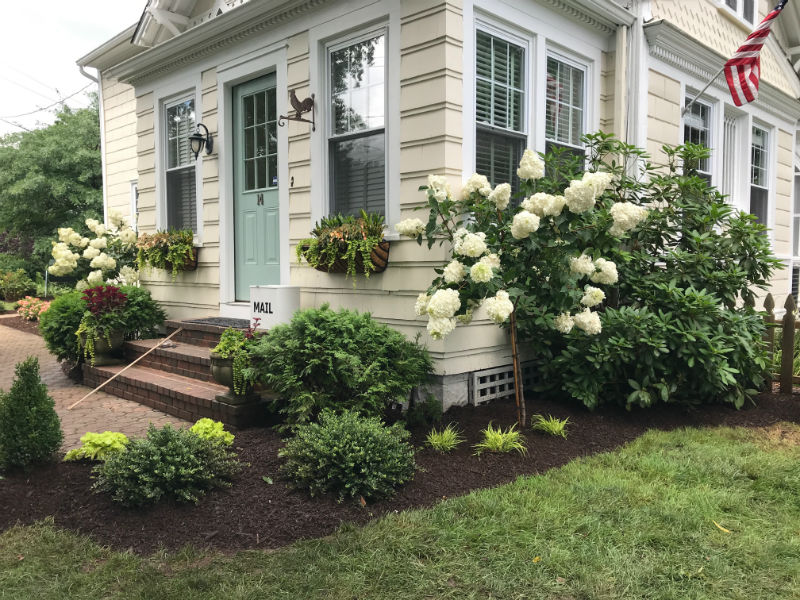
This month I am focusing on Hydrangea Paniculata, commonly called Panicle Hydrangea.
Hydrangea Paniculata are at their best in summer and fall when other shrubs are no longer in flower.
It is a vigorous, upright, rapid-growing, deciduous shrub that is native to China and Japan and features oval dark green leaves and upright, sharply-pointed, conical flower panicles that bloom from mid-summer into fall.
Because Panicle Hydrangeas bloom on new growth, they typically flower normally even if the twigs have been killed back by frost.
They are cold hardy and over winter successfully. They are hardy from zones 4 to 8. Plant them in a sunny, well-drained spot.
They generally bloom July to September. Because they bloom on new wood, prune in late winter to early spring to keep to the desired height and width. I use varieties of Hydrangea Paniculata in many of the gardens I design because of their reliability, beauty and easy care.
Some of the more popular types are as follows:
Hydrangea ‘Limelight’
Hydrangea ‘Limelight’ blooms mid summer when even the annuals are beginning to droop. It’s beautiful blossoms that start out white with a tinge of lime green ultimately turn to pinkish white.
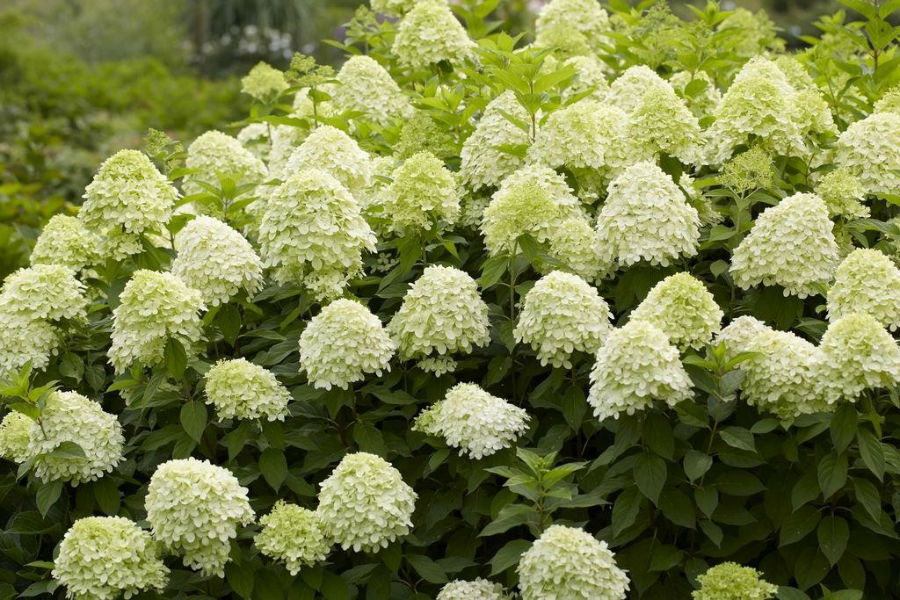
Driving around town they are visible everywhere and give the garden a last blast of drama. The show continues on into fall, when the flowers gradually turn to a rich, deep pink.
Fast growing, ‘Limelight’ makes a shrub approximately 6-8’ tall, and wide but as it blooms on new wood it can be pruned to keep to a desired height and width.
This past spring, early on before the plants leafed out I pruned my way back and the result was a huge crop of flowers on shrubs that were kept at 3-4’ tall and wide.
Hydrangea ‘Little Lime’
‘Little Lime’ has the same refreshing color as Limelight, but only about one-third the size.
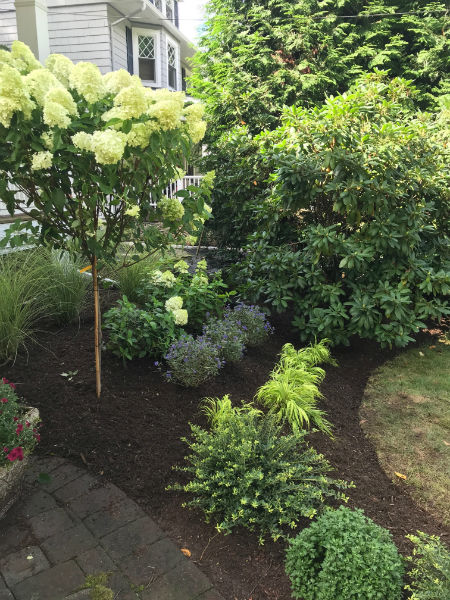
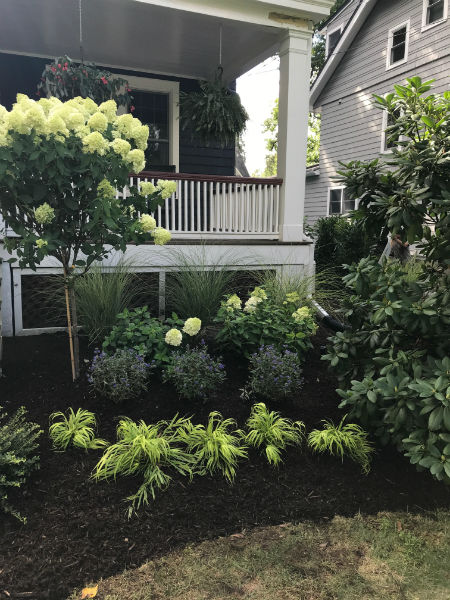
Hydrangea Paniculata ‘Little Lime’ grows to about 3–5′ tall and wide and produces large, tightly packed, green blossoms that turn shades of pink with cool weather. Flowers develop on the current years growth and will appear reliably year after year.
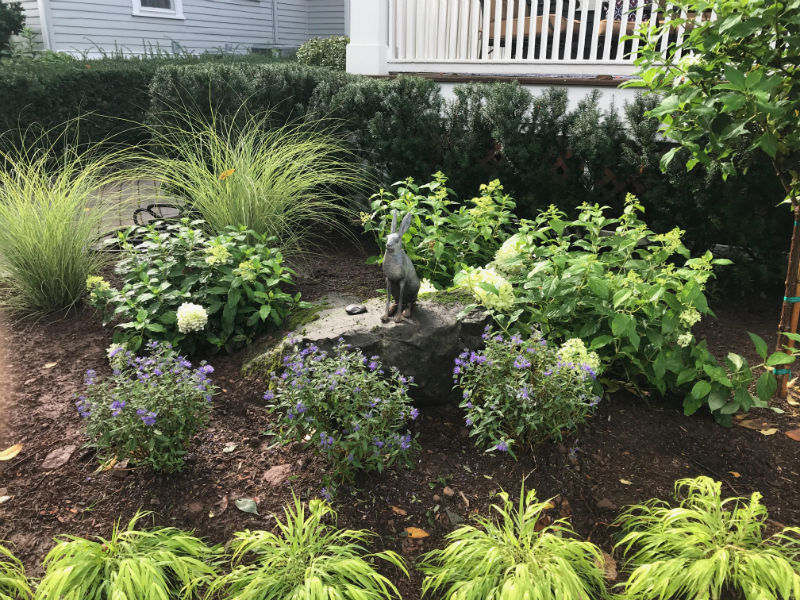
Hydrangea ‘Bobo’
This is a dwarf panicle hydrangea. It grows quickly and is engulfed by large white flowers in summer. Unlike the flowers of both ‘Limelight’ an ‘Little Lime’, the flowers of ‘Bobo’ don’t droop.

They remain more upright on strong stems, and continue to grow and lengthen as they bloom. As with ‘Limelights’ and ‘Little Limes’, as blooms age, they turn pink.
It is compact and dwarf in habit, and the flowers cover every inch of the plant right down to the ground.
Hydrangea Paniculata ‘Vanilla Strawberry’
The flowers of Vanilla Strawberry begin creamy white but turn pink and then strawberry red, sometimes even burgundy later in the season.
Since new flower heads continue opening into late summer, plants can display all three color stages at any one time.
The stems of ‘Vanilla Strawberry’ unlike the ‘Limelights’ are red which makes a beautiful contrast against the green leaves.
Hydrangea ‘Strawberry Sundae’
The colorful flowers of ‘Strawberry Sundae’ are similar to those of ‘Vanilla Strawberry’ but is a smaller variety which grows to about 4’ tall and 3’ wide.
Hydrangea paniculata ‘Fire Light’
An exceptionally hardy selection that blooms reliably even in cold climates. It begins the flower show in midsummer with abundant pure white blooms that gradually turn deep reddish pink.
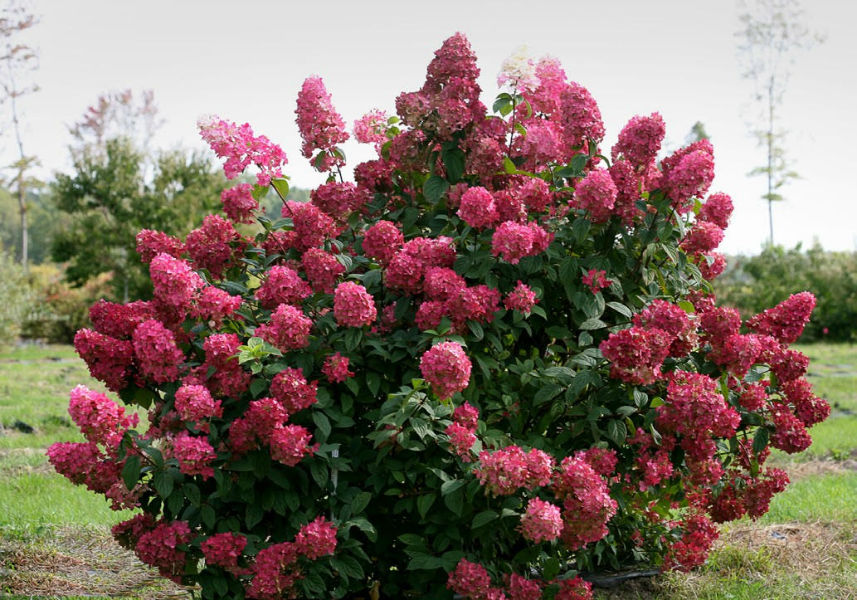
The strong stems support these large, 12–16″ flower heads without flopping. It grows to about 4–6′ tall x 5-6′ wide
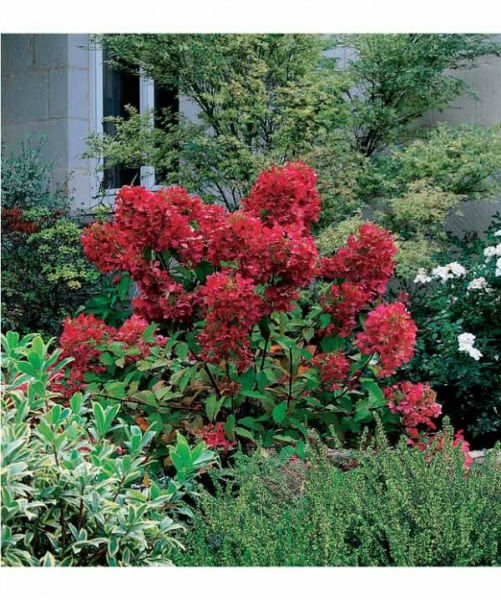
Hydrangea ‘Diamond Rouge’
The flower buds on this colorful selection explode into 12–15″ panicles of flowers that open creamy white but gradually darken to pink before becoming a rich red in fall with the cooler night temperatures.
These compact plants have sturdy, reddish brown stems that make them ideal for cut flower arrangements.
Finally, I couldn’t end this post without talking about one of my favorites in the Paniculata family.
That is the Hydrangea Paniculata, Tree Form. I use this plant often in many of my projects. It has the same wonderful blooms as the shrubs I have described above but it is grown as a tree and it is one of my absolute favorites.


I have never seen the red ones before.